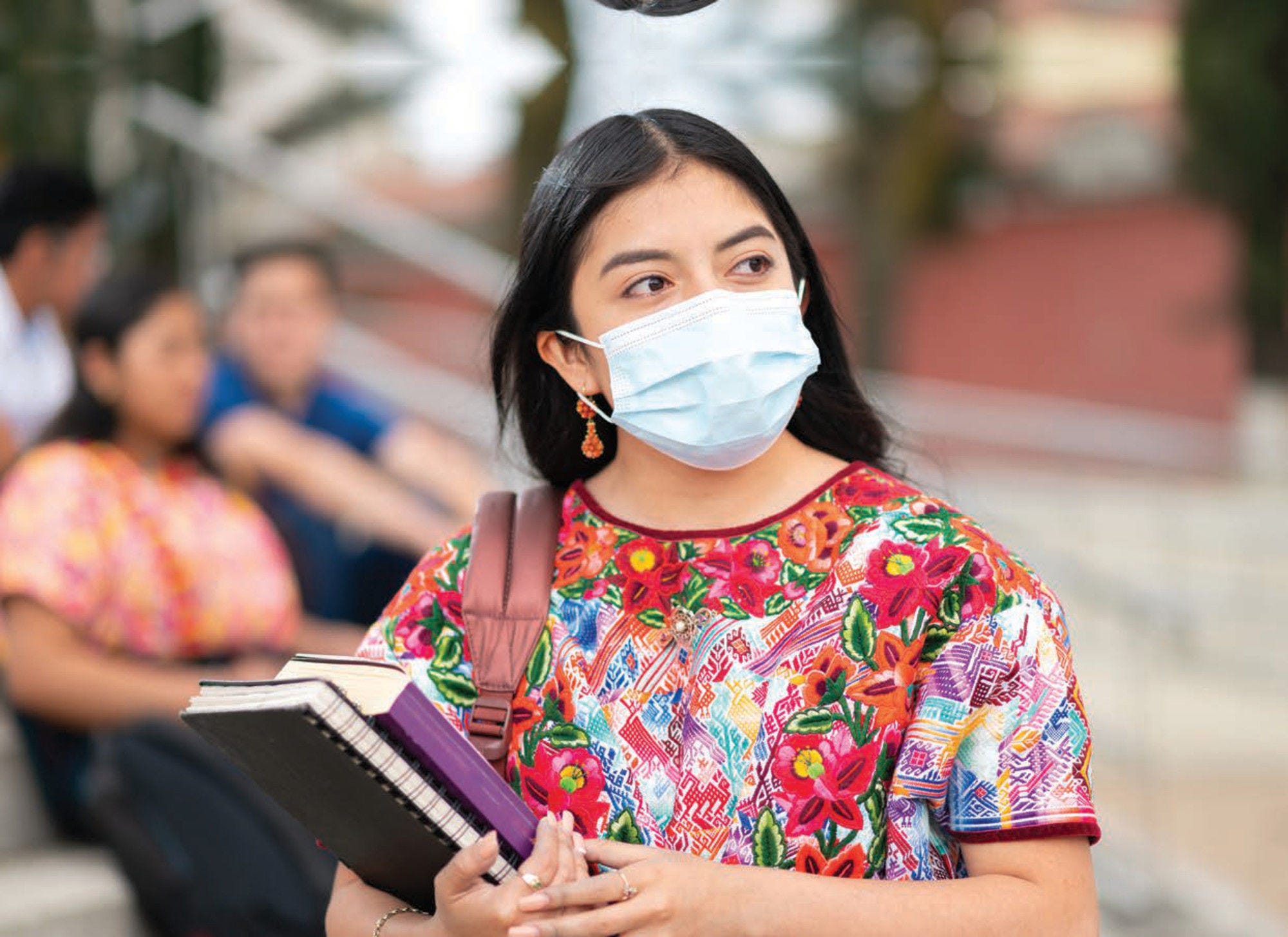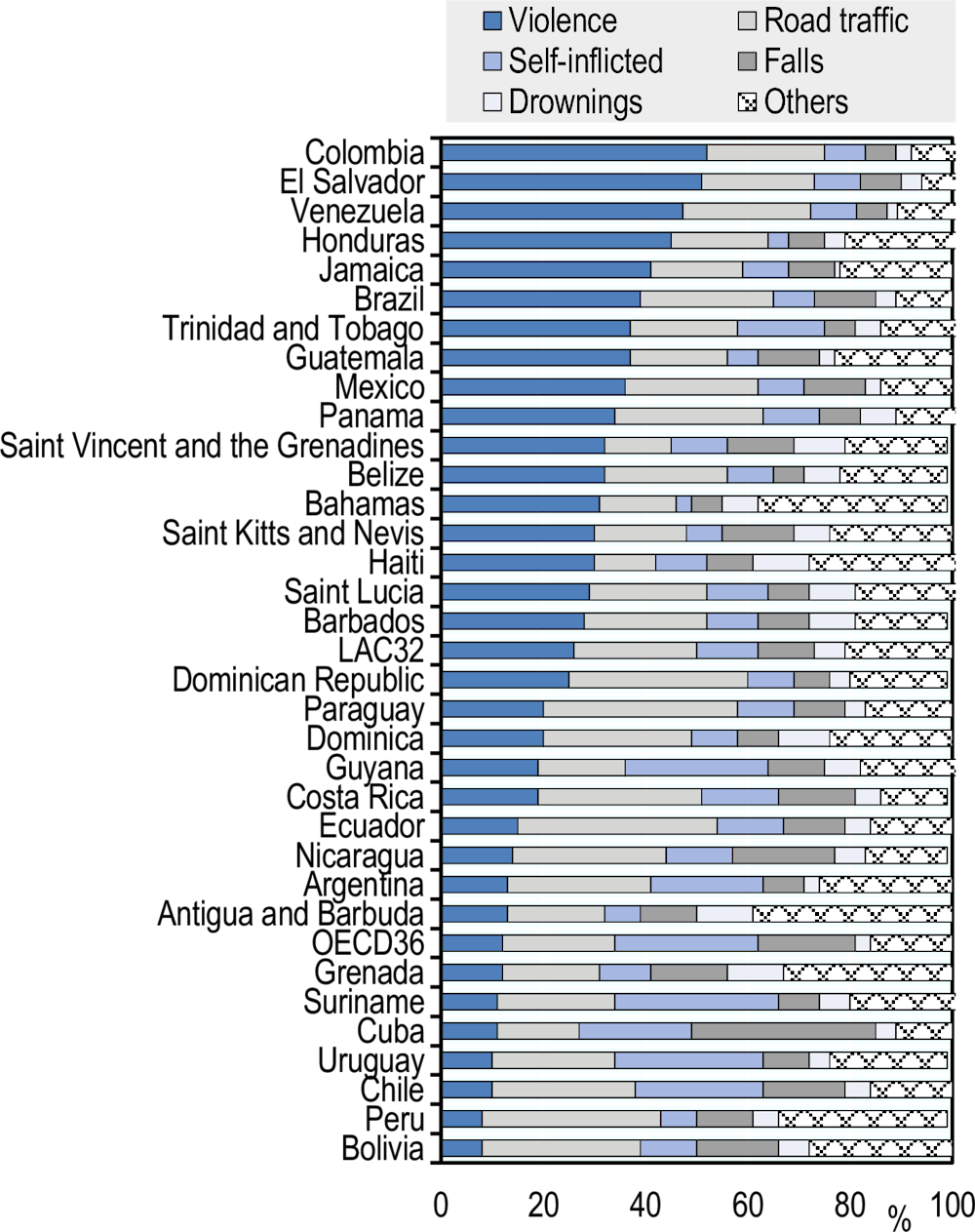In the WHO region of the Americas, injuries are a leading cause of death and disability for all age groups and took over 650 000 lives in 2019, accounting for 9% of all deaths (WHO, 2022[1]). The magnitude of the problem varies considerably across countries by cause, age, sex, and income group, but injury deaths, both intentional and unintentional, are largely preventable events.
Men had far higher mortality rates than women in the LAC region in 2019, with 102 deaths per 100 000 for men and 27 deaths per 100 000 for women, compared to 55 and 20 deaths per 100 000 respectively amongst OECD countries (Figure 3.22). Colombia shows the largest gender difference with an injuries mortality more than six times higher amongst men compared to women, followed by El Salvador and Saint Kitts and Nevis with rates more than five times higher. Conversely, Cuba and Bolivia show the lowest gender differences with injuries death gender ratios of 2 and 2.4, respectively.
Violent deaths were the most common cause of death due to injuries in the LAC region in 2019 and accounted in average for 26% of injury deaths, followed by road traffic deaths with 24%, and self-inflicted injuries with 12% (Figure 3.23). A different trend was observed in OECD countries where 28% of injury deaths were self-inflicted, 22% were due to road traffic crashes, and violent deaths represented 12%. However, the figure should be considered in the context of a corresponding global increase in the number of registered vehicles, suggesting that interventions to improve global road safety have mitigated the expected rise in the number of deaths (WHO, 2018[2]). Over half of all injury deaths could be attributed to interpersonal violence in Colombia and El Salvador, and the lowest proportion was observed in Peru, Bolivia, Uruguay and Chile, all below 11% of all injury deaths. In Ecuador, Paraguay, the Dominican Republic, and Peru, road traffic accidents represented over 35% of injury deaths and below 17% in Haiti, Saint Vincent and the Grenadines, Bahamas and Cuba. In Suriname, Uruguay, Guyana and Chile, self-inflicted deaths were over 25% of all injury deaths, and below 6% in Bahamas and Honduras.
Mortality from injuries due to violence shows an increase of 23% in LAC between 1990 and 2019, while the OECD had a decrease of ‑12% instead (Figure 3.24). The highest growth was observed in Belize, Venezuela, and Trinidad and Tobago with more than 130%, while the largest decrease occurred in Colombia (‑54%), Chile (‑53%) and Peru (‑47%). Mortality due to self-harm injuries in the period also increased in LAC by 2%, opposed to the reduction of 22% in the OECD. Paraguay shows the largest increase by 77% and Chile exhibits the most pronounced decrease of ‑52%. Road traffic injuries deaths in LAC and the OECD experienced a decrease of 20% and 54% between 1990 and 2019, respectively. Only Paraguay, Jamaica, Guatemala and the Dominican Republic saw an increase, while the largest reduction was observed in Cuba and Saint Kitts and Nevis (over ‑50%).
OECD countries have notably implemented a “safe systems” approach to road safety, which includes education and prevention campaigns as well as vehicle design and safety, and also adopted new laws and regulations and the enforcement of these laws (ITF, 2017[3]).



